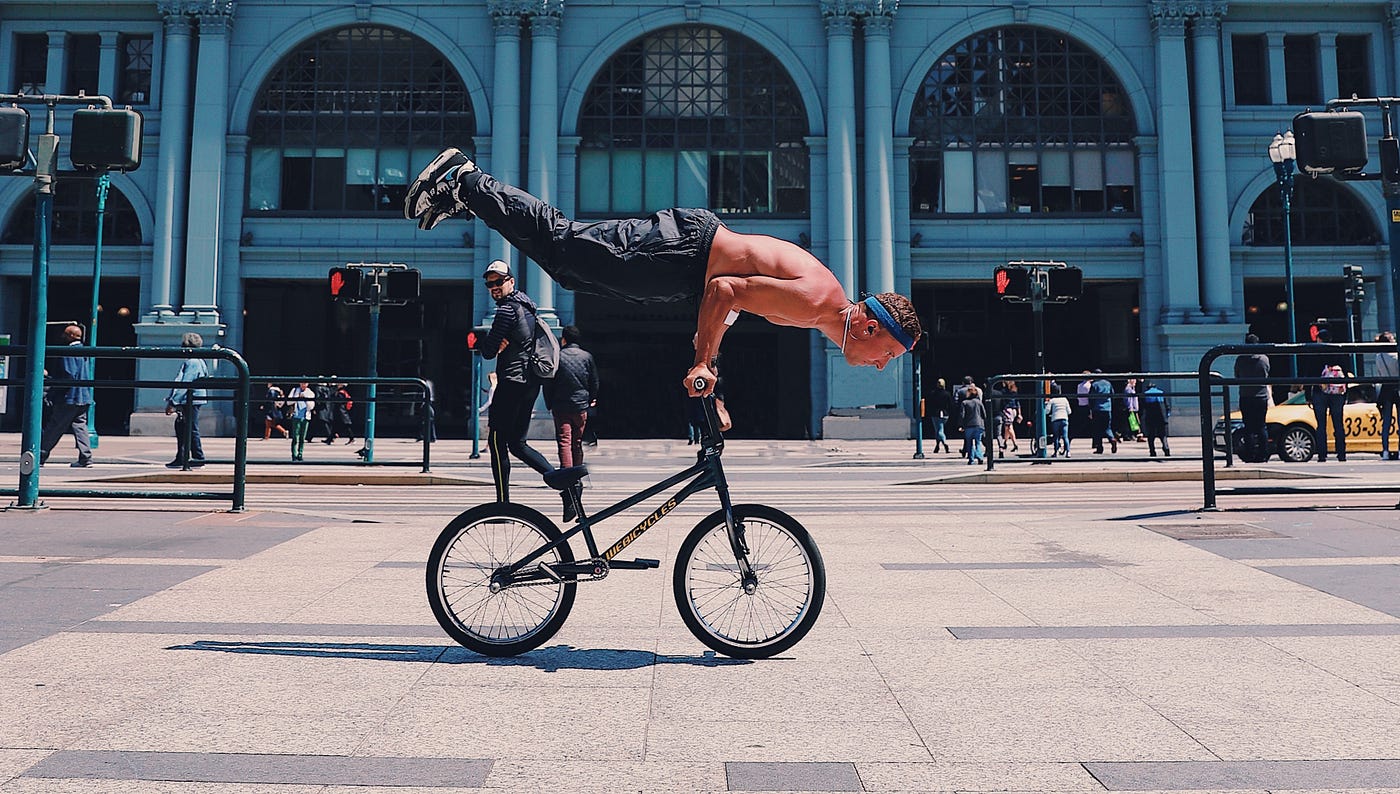Balance Bikes and Training Wheels: A Short Lesson in Teaching

I was about six when I learned to ride a real bike. Before that I had hobbled around the driveway on a bike outfitted with training wheels, slowly chasing my older brother.
Everything went exactly like you would expect. My dad and I went to a large, empty parking lot. My dad took off the training wheels. I was scared. He held on to the back of the seat as I slowly pedaled, and told me he wouldn’t let go. I was still scared. I started speeding up. He thought I was getting the hang of it. So he let go. Afraid that he had let go, I looked back after successfully biking my first several feet, and then promptly lost control of the bike.
Today, when I go to the park with my son, there are three- and four-year-olds zooming around — fearless — faster than I could ever go on my bike with training wheels. They’re on balance bikes: small bikes without pedals and without training wheels. The seat is low enough to the ground that the rider’s feet can touch the ground and high enough that, when the rider pulls up his feet, the bike coasts along just like a real bike.
There’s an important lesson here in how we structure learning experiences.
Sometimes, it seems like we give students lots of practice at something, but then, when we ask them to actually perform the skill — to bike for real — they can’t do it. This is the training wheel scenario. You can have someone use training wheels for years; they’re not going to get that much better at biking. But after a few months of riding on a balance bike, the transition to a pedaling bike is like nothing at all.
Balance bikes work because they focus on the essential skill of bike riding: maintaining balance on two wheels. Training wheels don’t because kids never get practice at that essential skill.
At first glance, it may seem like training wheels are closer to real biking than balance bikes: there are pedals, there’s a gear system — a bike with training wheels just is a real bike. Balance bikes don’t have pedals or gears at all. Many balance bikes even have plastic tires. But that’s a difference in the appearance of the bikes, not in what the learner is doing. And it’s what the learner does that drives learning.
With training wheels, the learner is pedaling. With the balance bike, the learner is balancing. And balancing is a lot closer to what a real bike is about — pedaling is a relatively trivial thing.
You could try “scaffolding” your way out of training wheels, raising them slowly over a period of time. But there’s a point at which you suddenly can’t rely on them (because you fall over). So this is not really a solution.
The idea of using a balance bike comes up over and over again in classroom settings. If you want students to learn to think scientifically, it’s not enough to have them repeat famous science experiments or solve well-defined problems. That’s the training wheel approach. Students need to be making decisions. And mistakes. They need to be figuring out how to test an idea, not just walking through steps that someone else gave them.
If you want students to think like historians, it’s not enough to have them read textbooks and summaries of the historical record. They need to be reading and reconciling conflicting historical reports. They need to be thinking about the perspective of the recording events. They need to be thinking about the challenges of historical evidence.
If you want students to learn to program, it’s not enough to have them transcribe code or perform isolated exercises. They need to be debugging and troubleshooting their programs. They need to be figuring out how large pieces fit together.
In short, students need to actually practice the essential skills, not mimic them.
Of course, it’s not always obvious what the essential skills are. If you had asked me to design a learning-to-bike experience, I probably would have come up with something like training wheels. Just give the kids a little assistance as they’re learning to ride the bike. The irony is that training wheels actually prevent kids from practicing their balance — just when a kid would need to recover his balance on his own, the training wheels are right there, stopping him from getting that essential practice.
That’s why teaching anything involves digging into the discipline to figure out what those essential skills are. After that, it’s about creating an experience that targets those essential skills, even if the activity looks a little different than how the pros do it.
In other words, it’s not about waiting until students know “enough” before giving them a real-bike kind of experience. Kids can ride balance bikes years before they can hope on a bike with training wheels. The question is not, “how can I give students all of the knowledge they need before they (finally) can start tackling realistic problems?” The question is, “how can I shape an experience that leverages the knowledge they do have to give them the right kind of practice?”
The result might not look like a real bike. But it will be a more effective learning experience. And a lot more fun to ride.
Member discussion